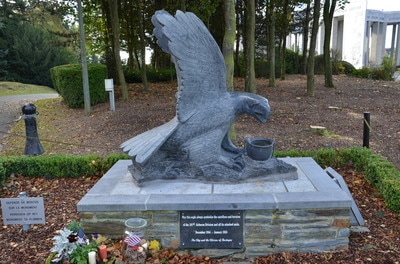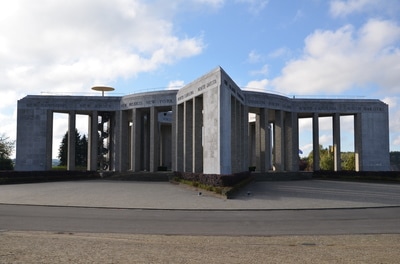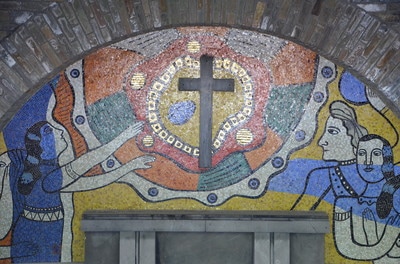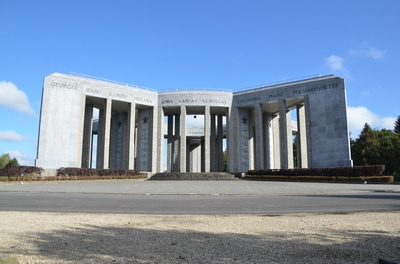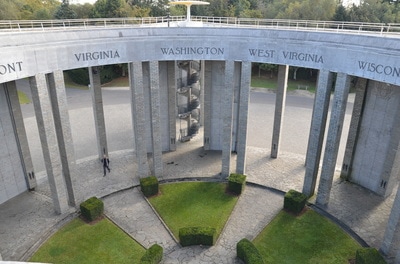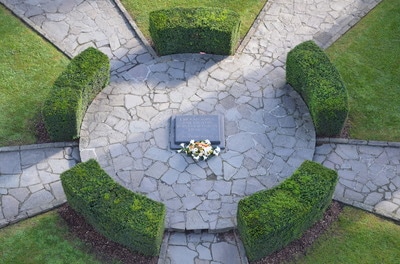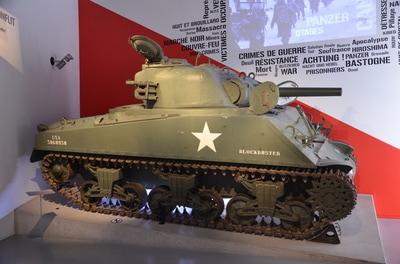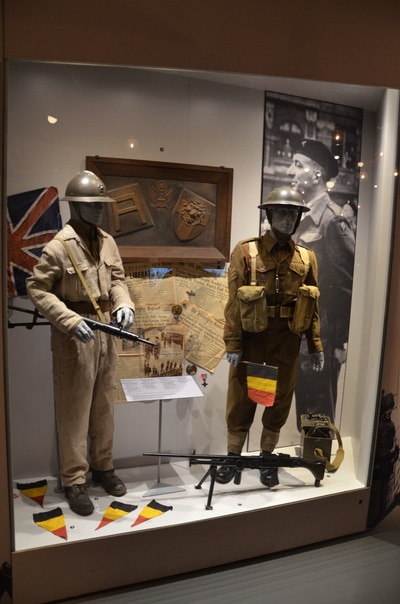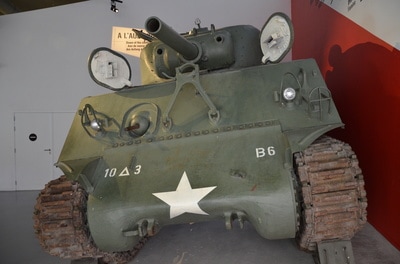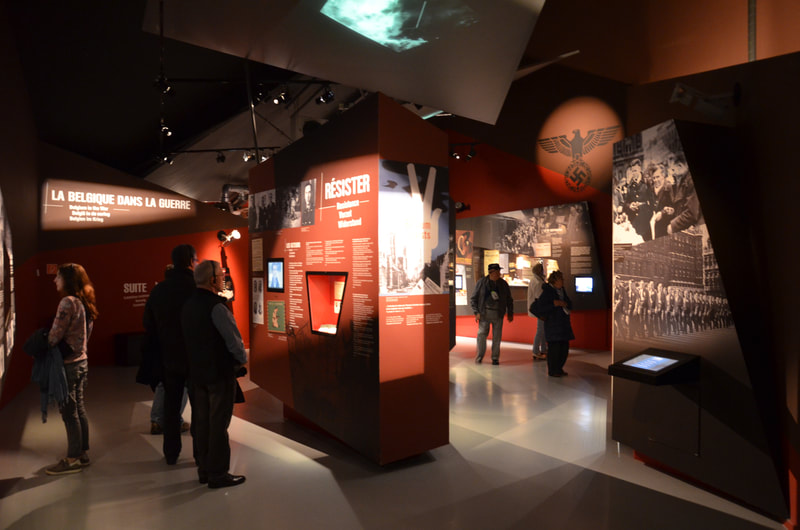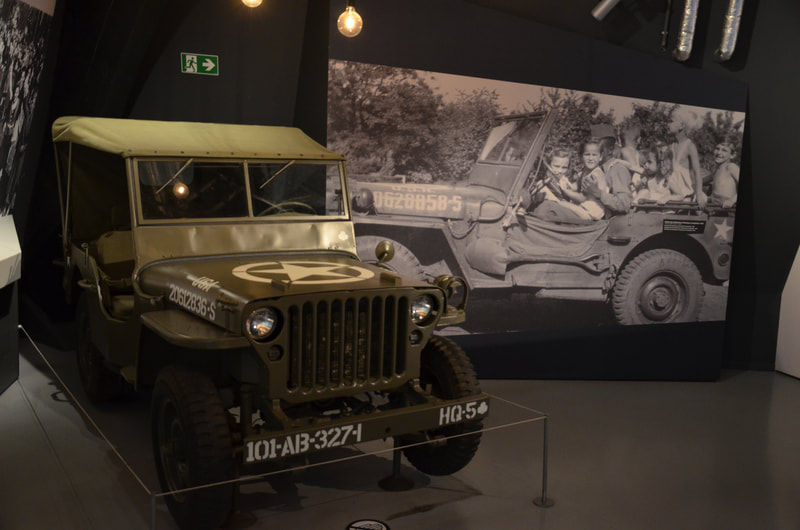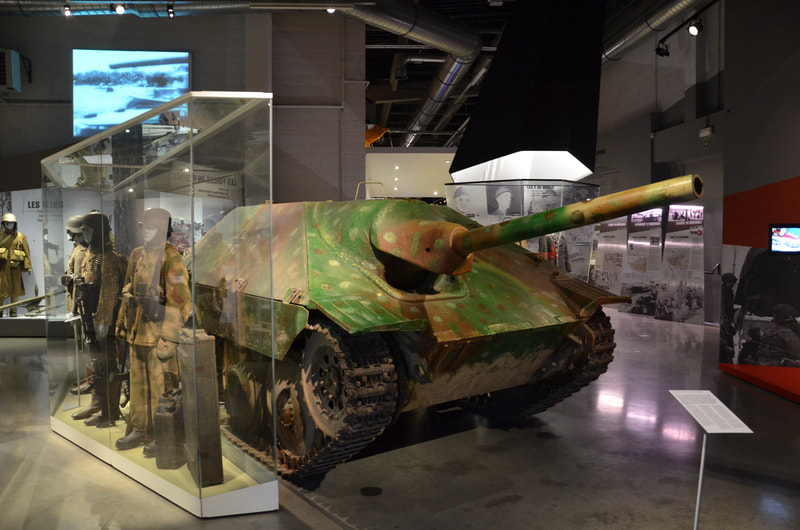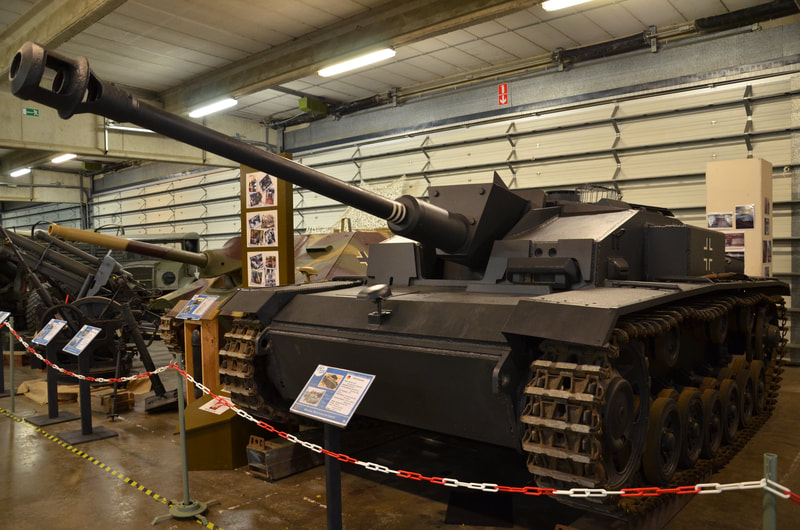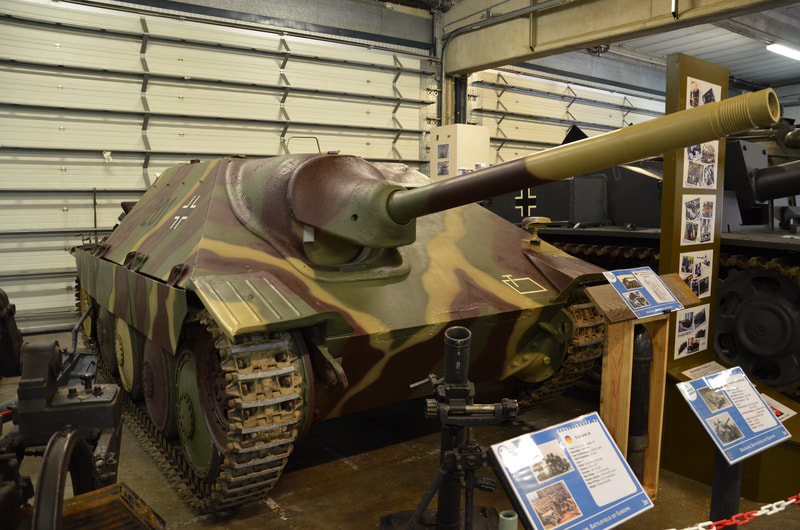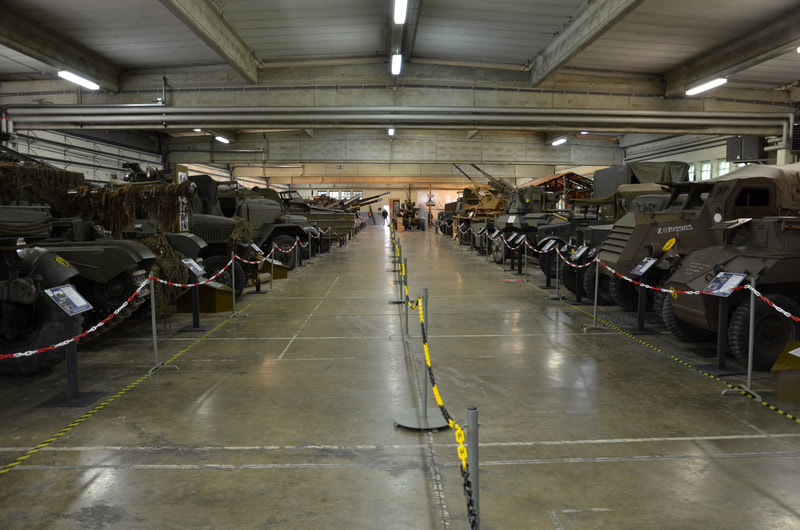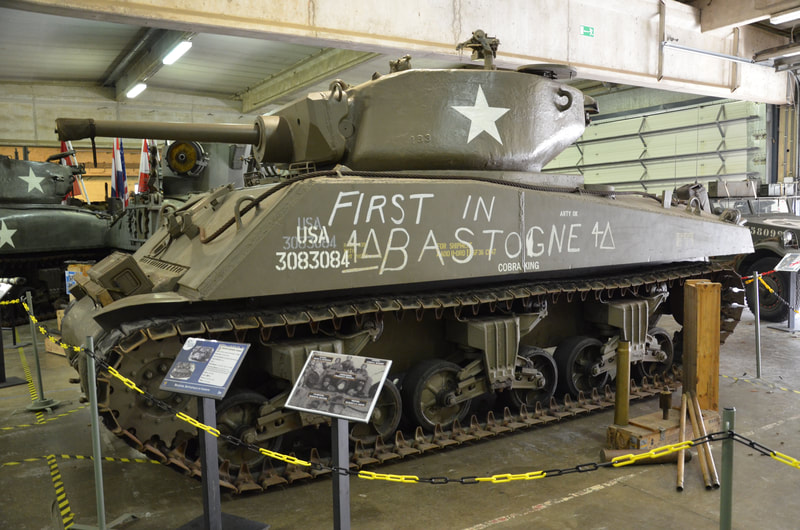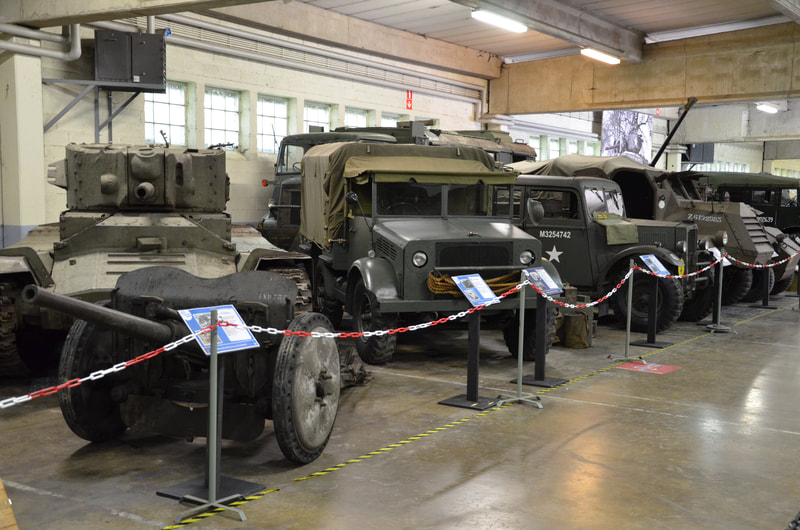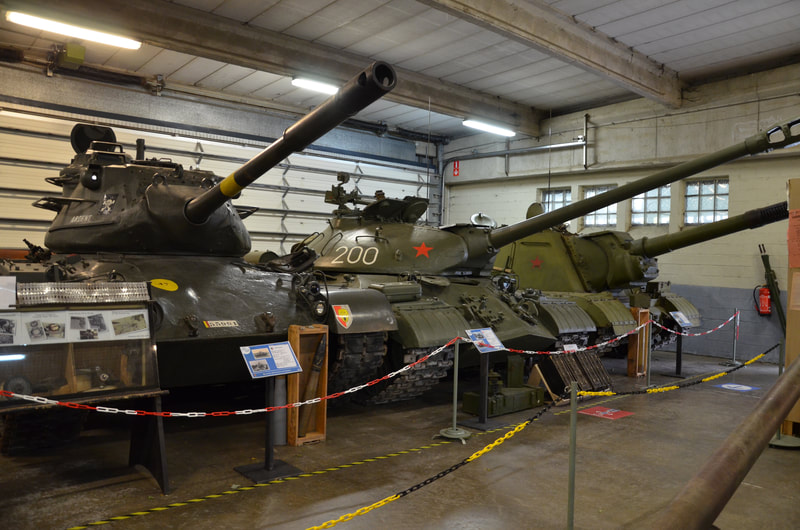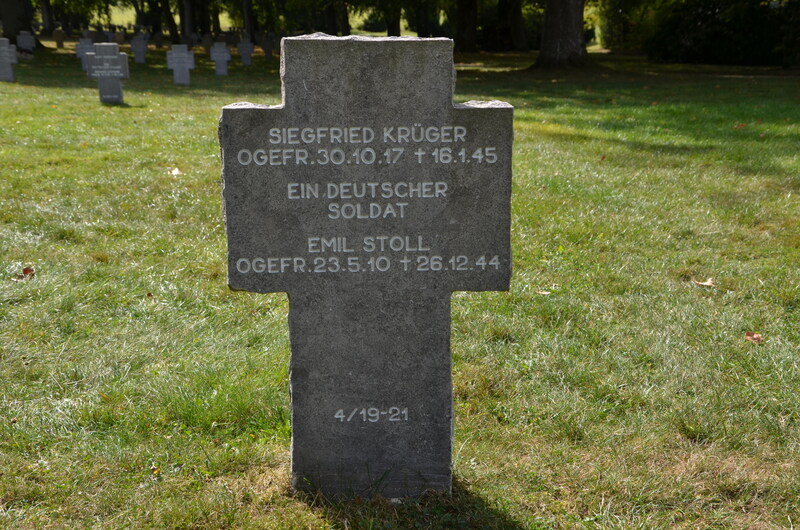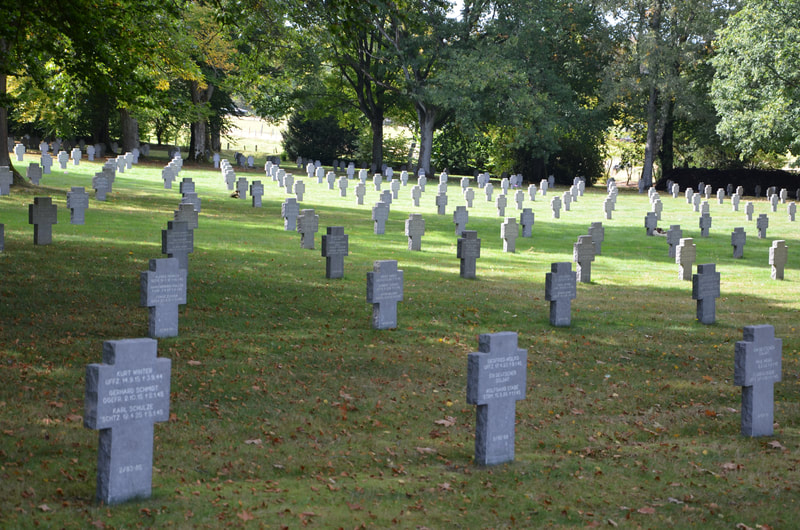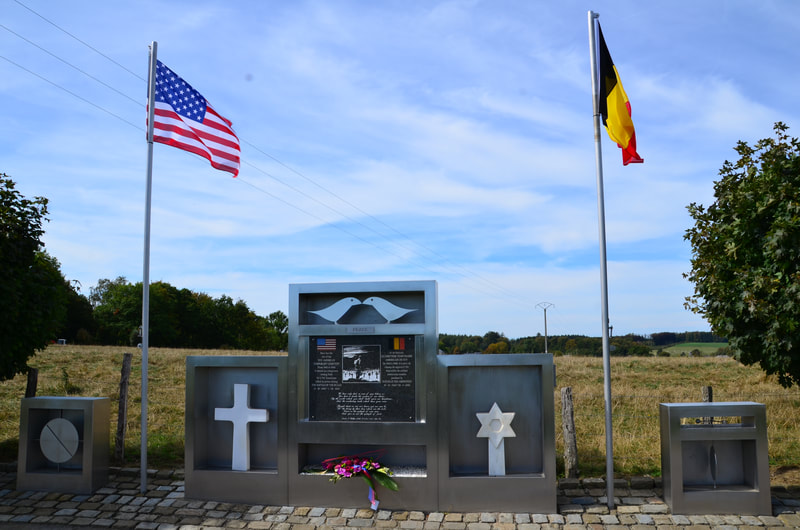Bastogne |
vertical divider
Drugie co do wielkości miasto Luksemburgii przeżyło swoje wielkie dni w czasie II Wojny Światowej. W grudniu 1944 roku Hitler wydał rozkaz ataku na aliantów w bardzo trudnym rejonie Ardenów. W Bastogne stacjonowała wtedy amerykańska 101 Dywizja Powietrznodesantowa. Głównodowodzącym wojskami amerykańskimi był generał McAuliffe. Miasto na kilka tygodni stało się areną krwawych walk, które trwały w Ardenach od 16 grudnia 1944 do 25 stycznia 1945 roku.
|
To commemorate the fallen near Bastogne, on Mardasson Hill, a commemorative mausoleum was built in 1950 in the form of a giant five-pointed star. Nowadays, Bastogne is a destination of many tourists from all over Europe and the United States. The town was almost completely destroyed during the war. Until today, only the church of St. Paul and fragments of medieval walls have survived. On McAuliffe Square stands a WWII tank, which is one of the main attractions. Next to it is the Tourist Information Office.
Just a few years ago, the bodies of 40 American and German soldiers were found in a forest near Bastogne. They were believed to be missing since fighting in the area.
Just a few years ago, the bodies of 40 American and German soldiers were found in a forest near Bastogne. They were believed to be missing since fighting in the area.
Bastogne war museum
Znajdujący się dwa kilometry od miasta pomnik, upamiętniający poległych tu żołnierzy amerykańskich, ma kształt pięcioramiennej gwiazdy. Na jej ścianach wyryto nazwy wszystkich amerykańskich stanów oraz dywizji biorących udział w walkach. Przy dobrej pogodzie warto wejść na szczyt, żeby zobaczyć rozległą panoramę Bastogne. Na dole mieści się krypta ozdobiona ściennymi mozaikami, które wykonał Fernand Léger. Obok pomnika znajduje się Bastogne war museum. Wspaniałe wojenne eksponaty, świetnie przygotowane multimedialne prezentacje to wizytówka tego muzeum. Zwiedzający mogą również obejrzeć 30-minutowy film opowiadający o bitwie o Ardeny.
|
Address:
Colline du Mardasson, 5 6600 Bastogne |
Opening hours:
15 marca-15 grudnia: 9.30-18.00 (ostatnie wejście 16.00) lipiec-sierpień: 9.30-19.00 (ostatnie wejście 17.00) |
Ticket price:
Dorośli: 14 Euro/Emeryci: 12 Euro Dzieci (6-18lat): 8 Euro |
Bastogne Barrack Museum
The museum was opened to visitors in 2010. It is located in the barracks that housed the Allied headquarters during the Ardennes offensive in 1944. The museum has a rich collection of armored weapons, both those used by American soldiers and German weapons, as well as several exhibits of Russian tanks. In the nearby barracks there are workshops in which vehicles from the Second World War are renovated.
|
Address:
Rue de La Roche 40 6600 Bastogne |
Opening hours:
|
Ticket price:
10 Euro |
Recogne German War Cemetery
A few kilometers from Bastogne, in the small town of Recogne, there is a German war cemetery. At first, 3000 German soldiers who died in the fighting were buried there. In 1945, the Americans created a temporary cemetery here for 2701 American soldiers who died during the defense of Bastogne. After the war, in 1948, American soldiers were transferred to the Henri-Chapelle war cemetery. At the same time, the fallen German soldiers who were buried in various places in Belgium were transferred to the cemeteries in Recogne and in the town of Lommel. Currently, 6807 German soldiers are buried at the Recogne Cemetery.
In 2017 a statue of a sailor and a nurse was placed between the monumental star and the Bastogne War Museum. It shows the famous kiss scene captured in a photograph taken in New York's Times Square, which in the US became a symbol of the end of World War II. This monument is presented in various places around the world, therefore it was only in Bastogne for a few months.
